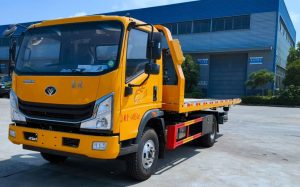Understanding the Anatomy of Truck-Mounted Crane Parts

Introduction
Truck-mounted cranes are essential equipment in various industries, including construction, transportation, and logistics. https://www.worktruckmaker.com/the-essential-guide-to-tanker-trucks-types-uses-and-safety-considerations/ are designed to lift, move, and place heavy loads with precision and efficiency. To understand how truck-mounted cranes work, it is crucial to delve into the intricate details of their components and parts. In this comprehensive guide, we will explore the anatomy of truck-mounted crane parts, their functions, and how they work together to ensure the smooth operation of these powerful machines.
1. Chassis and Frame
The chassis and frame form the foundation of a truck-mounted crane, providing stability and support for the entire structure. The chassis is the main structural component of the truck, onto which the crane is mounted. It is typically made of high-strength steel to withstand heavy loads and rough terrain. The frame, on the other hand, is the framework that supports the crane's components and ensures structural integrity.
2. Boom
The boom is the most visible and recognizable part of a truck-mounted crane. It is the arm of the crane that extends and retracts to lift and place loads. Booms are usually made of high-strength steel or aluminum to withstand the stresses of lifting heavy objects. Depending on the type of crane, booms can be telescopic, lattice, or hydraulic. Telescopic booms consist of multiple sections that extend and retract to reach different heights, while lattice booms are made of interconnected trusses for added strength. Hydraulic booms use hydraulic cylinders to extend and retract, providing precise control over the lifting operation.
3. Jib
The jib is an optional extension of the crane boom that provides additional reach and height for lifting operations. Jibs can be fixed or luffing, meaning they can be adjusted to different angles for increased flexibility. Like booms, jibs are made of high-strength materials to support heavy loads and ensure stability during lifting.
4. Counterweights
Counterweights are essential components of a truck-mounted crane that help balance the weight of the load being lifted. They are typically located at the rear of the crane and can be added or removed to adjust the crane's lifting capacity. Counterweights are crucial for maintaining stability and preventing the crane from tipping over during lifting operations.
5. Outriggers
Outriggers are hydraulic or manual extensions that provide additional stability to the crane when lifting heavy loads. They extend horizontally from the sides of the crane to increase the crane's footprint and prevent tipping. Outriggers are essential for ensuring safe lifting operations, especially on uneven or sloped surfaces.
6. Winch
The winch is a motorized device that winds and unwinds the cable or rope used for lifting and lowering loads. It is typically located at the base of the crane and is controlled by the crane operator. Winches come in various sizes and capacities to suit different lifting requirements. They play a crucial role in the lifting operation, providing the necessary pulling power to hoist heavy objects.
7. Hydraulic System
Truck-mounted cranes rely on hydraulic systems to power various components, such as booms, jibs, outriggers, and winches. Hydraulic systems use pressurized fluid to generate force and motion, allowing for precise control over the crane's operations. Hydraulic pumps, cylinders, valves, and hoses make up the hydraulic system of a truck-mounted crane, working together to ensure smooth and efficient lifting.
8. Control System

The control system of a truck-mounted crane consists of joysticks, levers, buttons, and other controls that allow the operator to maneuver the crane and perform lifting operations. Modern cranes may also feature electronic control systems that provide advanced functionalities, such as load monitoring, safety alarms, and automatic positioning. The control system is a critical component that enables operators to operate the crane safely and efficiently.
9. Cab
The cab of a truck-mounted crane is where the operator sits and controls the crane's operations. It is equipped with a seat, controls, instruments, and safety features to ensure the operator's comfort and safety during lifting operations. The cab provides a clear view of the lifting area and allows the operator to monitor the load, surroundings, and crane functions.
10. Safety Features
Truck-mounted cranes are equipped with various safety features to protect operators, bystanders, and the crane itself during lifting operations. Safety features may include overload protection systems, emergency stop buttons, alarms, outrigger interlocks, load moment indicators, and anti-two block devices. These safety features are designed to prevent accidents, injuries, and damage to the crane and its surroundings.
Conclusion
Truck-mounted cranes are complex machines that rely on a wide range of components and parts to perform lifting operations safely and efficiently. Understanding the anatomy of truck-mounted crane parts, including the chassis, boom, jib, counterweights, outriggers, winch, hydraulic system, control system, cab, and safety features, is crucial for operators and professionals working in industries that utilize these powerful machines. By learning how these components work together, we can gain a deeper appreciation for the engineering and technology behind truck-mounted cranes and ensure their safe and effective operation in various applications.
